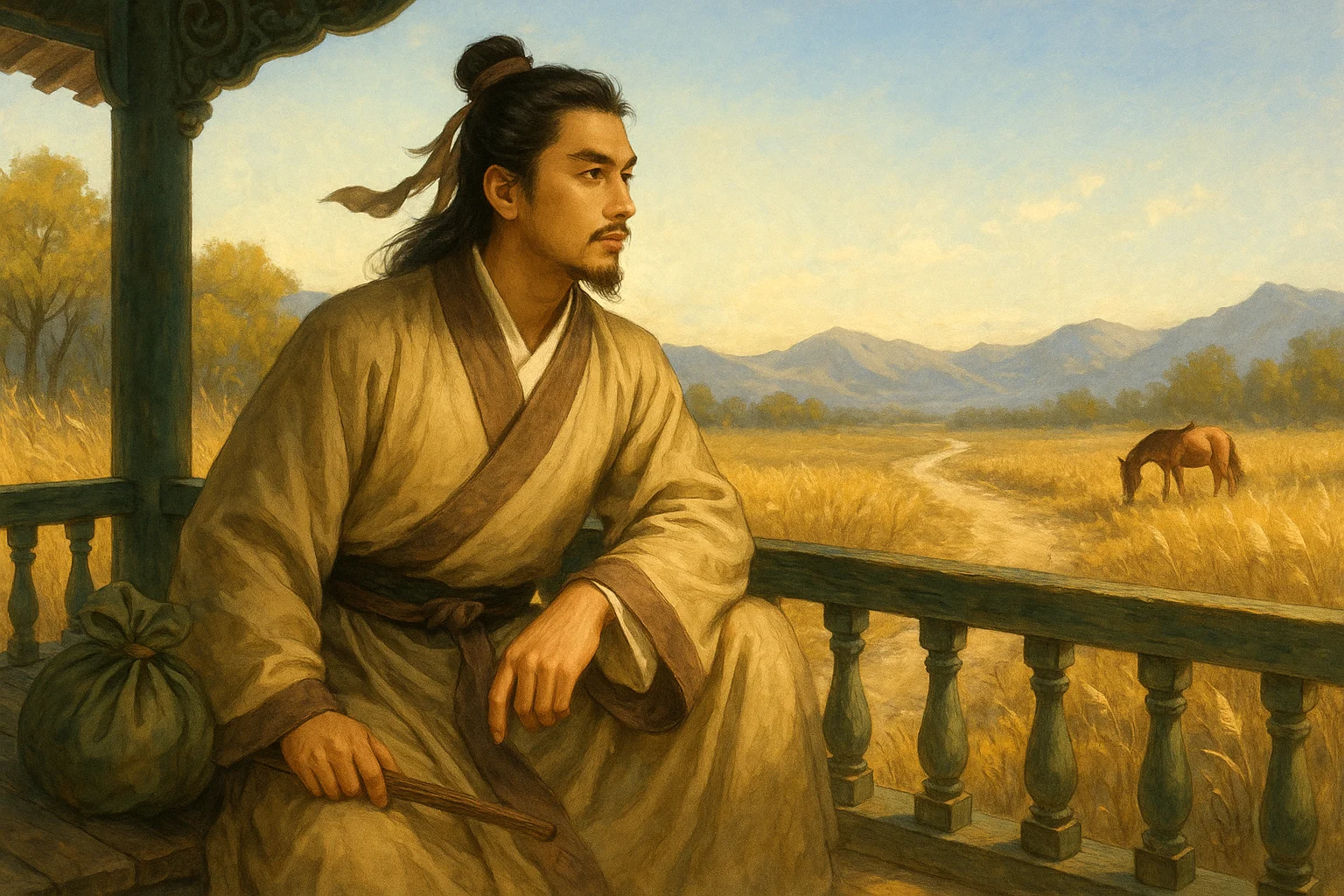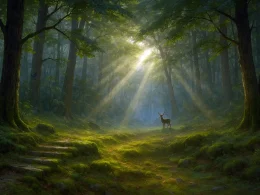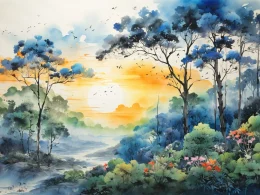Jade pillars hum when fierce winds rise,
All nature’s voices flood the skies.
Through dense leaves slow their flight,
In void air fade from sight.
Pine springs chant at Deer Gate by night,
Crane-flutes dawn by Luo’s streams bright.
I sit with monks who know truth’s sound,
Chin propped—in silence all is found.
Original Poem
「风筝」
司空曙
高风吹玉柱,万籁忽齐飘。
飒树迟难度,萦空细渐销。
松泉鹿门夜,笙鹤洛滨朝。
坐与真僧听,支颐向寂寥。
Interpretation
This poem was composed during the Tang Dynasty by Sikong Shu, expressing his transcendental thoughts through the imagery of a kite. Though titled "Kite," the work transcends mere description of its form or movement, instead using the kite's wind-borne sounds and motions to evoke profound reflections on nature, human existence, and serene solitude. Written while sitting with a Buddhist monk, the poem transforms the kite's undulating sounds into cosmic resonance, embedding Zen philosophy within its poetic realm—a hallmark of late Tang recluse poetry's quiet profundity.
First Couplet: "高风吹玉柱,万籁忽齐飘。"
Gāo fēng chuī yù zhù, wàn lài hū qí piāo.
Mighty winds play the jade pillars, / Suddenly all nature's voices rise in chorus.
The opening likens kite strings to "jade pillars" producing crystalline notes, blending visual elegance with auditory beauty—the image also evokes zither bridges, adding scholarly refinement. "All nature's voices in chorus" merges the kite's song with the universe's grand symphony, capturing both the wind's sudden awakening of creation and the poet's acute sensitivity to nature's interconnectedness.
Second Couplet: "飒树迟难度,萦空细渐销。"
Sà shù chí nán dù, yíng kōng xì jiàn xiāo.
Rustling trees resist the wind's passage, / As lingering notes in void gradually dissolve.
Transitioning from auditory impression to meticulous observation, these lines trace the wind's journey: kite sounds penetrate the woods yet grow fragmented amid dense branches, ultimately dissipating into emptiness. Verbs like "rustle," "linger," and "dissolve" construct a kinetic portrait of attenuation, subtly mirroring life's ephemerality and thought's ultimate return to stillness.
Third Couplet: "松泉鹿门夜,笙鹤洛滨朝。"
Sōng quán Lùmén yè, shēng hè Luòbīn zhāo.
Pine-springs at Lumen by night, / Phoenix-flutes by Luobin at dawn.
The imagery suddenly transcends reality—Lumen Mountain (recluse haunt) with its nocturnal pine-springs represents hermitic solitude, while Luoyang's riverbank phoenix-flutes (celestial music) evoke transcendent purity. These imagined soundscapes reveal the poet's yearning for reclusion while alchemizing wind into mountain streams and immortal melodies, crafting an ethereal realm between perception and imagination.
Fourth Couplet: "坐与真僧听,支颐向寂寥。"
Zuò yǔ zhēn sēng tīng, zhī yí xiàng jìliáo.
Seated with the true monk, we listen— / Chin propped, facing vast silence.
The conclusion returns to the immediate scene—poet and monk contemplating sound's dissolution into stillness. "Chin propped" captures meditative poise and cosmic wonder, while "facing vast silence" unveils the poem's essence: in nature's whispers and life's quietude, the poet apprehends an ineffable transcendent state.
Holistic Appreciation
On the surface depicting the sound of wind-bells, this poem subtly channels Daoist philosophy through the imagery of their resonance, dissipation and transformation, portraying a fusion of nature and mental state. Moving from concrete sounds to abstract imagery before returning to tranquil reality, it forms a structural progression of "movement - abstraction - stillness". The language is fresh yet classical, the imagery ethereal and profound, embodying not only the secluded charm of mountain forests but also deep philosophical contemplation. Rather than focusing excessively on the wind-bells themselves, the poet uses the undulations of wind and the wandering of sounds to evoke reflections on life's transience, the emptiness of all sounds, and ultimate return to silence, imbued with Zen-like and Daoist realization.
Artistic Merits
- Natural Inspiration, Object as Emotional Vehicle: Beginning with wind-bell sounds as poetic inspiration, the poem transcends physical description to progressively unfold inner consciousness.
- Scene-Emotion Fusion, Sound-Landscape Reflection: Through depicting the dynamic process of wind sounds, it reveals the poet's state of meditative listening to nature, achieving perfect harmony between external scenery and internal feeling.
- Unconventional Imagery, Expansive Structure: Shifting from forest winds to mountain nights and then to flute-playing cranes, the continuously transforming imagery creates a spiritually roaming quality.
- Tranquil Conclusion, Zen-like Closure: The ending stillness represents both formal resolution and spiritual epiphany after transcendence.
Insights
This "The Wind Harp" poem is not merely a depiction of natural sounds but a journey of mental contemplation and meditation. It enlightens us: amidst life's clamor, what's most worth preserving is often that beauty of stillness and solitude. Worldly affairs are like wind - sounds arise and cease - yet only those who can sit alone listening where the wind subsides may attain true flavor and genuine realization.
About the poet

Sikong Shu (司空曙), c. 720 – c. 790, courtesy name Wenming, was a native of Guangping (present-day Yongnian County, Hebei Province). A renowned mid-Tang dynasty poet, he was one of the "Ten Literary Masters of the Dali Era," alongside Lu Lun, Qian Qi, Han Hong, Li Duan, and others. Though his life lacked illustrious achievements, his poetry—marked by genuine emotion in simplicity and profound contemplation in solitude—secured him a unique place in mid-Tang literary circles.












